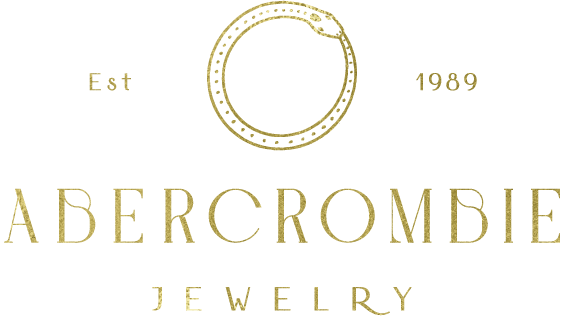Jewelry has been a treasured possession throughout history, and jewelry-making is an art form that can be both rewarding and lucrative. However, selling to a professional jewelry buyer can be intimidating, especially for those just starting out in the industry. This article will explore how to market your handmade pieces and increase sales successfully.
First, it’s essential to understand your target customer. Do you focus on trendy items or classic designs? Do you specialize in gold or silver? Understanding these questions will help determine your marketing strategies.
Finally, this article will provide practical advice on creating compelling content for their website or social media accounts; showcasing their products through photography; building relationships with potential customers; and developing loyalty programs that keep customers returning. By learning more about marketing strategies geared towards selling jewelry specifically, business owners have the tools to build a successful venture from the ground up!
Crafting An Irresistible Pitch: How to Appeal to Your Target Audience
Crafting an irresistible pitch is vital to selling jewelry. To appeal to your target audience, you must understand the wants of your audience. Start by researching their needs, preferences, and buying habits. It will help you tailor your message to resonate.
Next: figure out the best channels for reaching them. Consider which platforms they use most often – social media, email newsletters, TV ads, and print magazines.
Once you’ve completed the basics, it’s time for some creativity! Think about ways to make your message stand out from the competition – perhaps through storytelling or clever copywriting techniques. Ensure every element of your pitch speaks directly to the person receiving it – after all, if they don’t feel like it’s meant specifically for them, they’re unlikely to follow through with a purchase! With an eye-catching presentation and compelling content tailored just right, you can create an offer that no one can refuse – paving the way for successful jewelry sales.
Strategies For Selling Jewelry Online and In Person
Selling jewelry is about more than finding the right product. It also requires a well-crafted pitch that appeals to your target audience. To do this, you need to understand how people buy jewelry and what they value in it. This section will provide strategies for selling jewelry online and in person to reach a broader range of customers.
To make a compelling pitch, you must be aware of how people shop for jewelry—online or at brick-and-mortar stores—and tailor your approach accordingly. For example, when selling online, consider using visuals and social media platforms such as Instagram to showcase your products. On the other hand, if you’re dealing with customers in person, focus on creating an inviting atmosphere and providing helpful advice on how best to wear each jewelry item.
No matter which platform you choose for selling jewelry, it’s vital that you create an appealing message that resonates with potential buyers. Think carefully about who would be interested in purchasing your items and craft a narrative around them; this will help capture their attention more effectively than simply listing prices or features alone ever could! With these strategies in mind, let’s move on to maximizing profits through effective pricing and promotion.
Maximizing Profits Through Effective Pricing and Promotion
Retailing jewelry is essential to maximize profits. Setting the right price point is critical, setting the tone for customers to perceive your product. Promotional strategies can drive sales and draw in new customers. Let’s explore some tips on pricing and promoting jewelry.
- When pricing jewelry, you want to ensure you’re not undercutting yourself or your competitors too much – staying competitive without sacrificing potential profit margins is crucial. You should also know what other stores charge for similar products to know where you stand in the competition.
- Additionally, consider offering discounts during certain times of the year or special promotions that could draw more attention from shoppers who may have otherwise overlooked your store’s offerings.
- Promotion is another critical factor in selling jewelry online or offline; if no one knows about your product, they won’t buy it! Utilizing social media platforms like Facebook and Instagram can help get the word out about your business quickly and affordably; these sites allow businesses to target specific demographics with tailored ads at minimal cost compared with traditional advertising methods such as TV commercials or print advertisements.
- Moreover, utilizing influencers within relevant niches can be a great way to spread awareness while building relationships with prospective customers who share interests like yours!
With thoughtful consideration given both towards pricing strategy and promotional tactics, any business owner looking into selling jewelry can confidently set themselves up for success in today’s market! By setting appropriate price points while effectively marketing their products through digital channels like social media platforms or influencer campaigns – there’s never been a better time than now for entrepreneurs looking to break into this lucrative industry!
In summary, we’ve covered how to craft an irresistible pitch for selling jewelry, strategies for selling in both online and physical settings, and the importance of pricing and promotion. Selling jewelry is a complex undertaking that requires knowledge of your target audience’s preferences and strategic planning. It’s important to remember that you can constantly adjust your approach based on what works best for you.
Overall, selling jewelry is an excellent opportunity to make money correctly. You need to understand your target market, create a solid marketing plan with attractive pricing options and promotional activities, and use effective sales tactics when engaging potential customers. With some dedication and creativity, you can be successful in this business!
Finally, start small by testing different approaches on a limited basis before committing more resources to the venture. It will allow you to get customer feedback while minimizing risks associated with more significant investments. Good luck!
